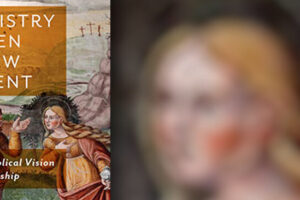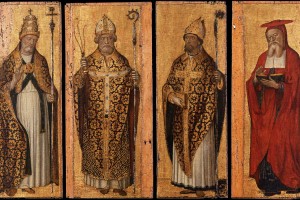Tell Her Story: How Women Led, Taught, and Ministered in the Early Church by Nijay K. Gupta (Downers Grove: InterVarsity Press, 2023).
Imagine my surprise when preaching on Mary (Jesus’ mother), or Tabitha, or the importance of the presence of women in the Acts 1:14 prayer sessions, and then being told by those listening that they had never heard any sermons on these women before! It was a definite moment of confusion on my part. “How could this be true?” It turns out that this was just the type of male-focused preaching they had heard over the years. Preach about the roles of men in the scriptures? Check. Preach about the role of women in the scriptures? Uh…...
Thankfully, Nijay Gupta (professor of New Testament at Northern Seminary) has sought to set a new direction in his recent work, Tell Her Story. This is an important work because he’s written “an exercise in amplification” (p. 3). In other words, Dr. Gupta wants to turn up the volume on the narratives that we should be hearing about women in the early Church. It’s a very timely book, but it is not a revisionist work that’s been influenced by culture. Instead, this book is the result of simply asking why so many women’s ministries in the Bible have been overlooked. After all, in both Testaments there are plenty of women who are acknowledged for their ministries to God’s people.
Gupta begins by reviewing the ministry of Deborah in Judges. In Judges 4 and 5, Deborah is clearly just another one of Israel’s judges and a prophetess who is also a keen military advisor. Gupta then jumps back to the ideal in the Genesis 1-3 that men and women are to serve the Lord together in partnership. Admittedly, sin brings about many difficulties in the way men and women do relate to one another, but the main emphasis of service and trust still holds true.
Moving into the New Testament, Gupta readily admits that Roman patriarchy is alive and well. Yet historical studies of the era reveal the idea that “women of sufficient social status in the Roman world exercised a great deal of freedom and power with regard to business and social activities” (p. 37). The public service by women is more of an indication of status rather than gender. This meant that the same principle also carries over into the early Church. The result of historical, linguistic, and grammatical studies all illustrate that women are also more involved in leadership roles in the Church when similar factors of status and experience are acknowledged. Comparatively, women should not be pushed aside due to our latent myths of how we think the Greco-Roman world operates (pp. 38-41). Women such as Mary (Jesus’ mother), Elizabeth, and Mary Magdalene all play supportive roles in the life and ministry of Jesus. Some scholars even postulate that Mary was one of the recipients of the tongues of fire in response to her being present for their prayer meetings (Acts 1:14, 2:1-4). Gupta also highlights many of the Pauline references to women in ministry that are readily visible, but too often ignored. As a great resource, Gupta also provides an additional three chapters of in-depth background on Paul’s ministry associates: Phoebe, Prisca, and Junia.
The biggest question for many readers will be what to do with the 1 Timothy 2:11-12 prohibitions against women teaching or having authority over a man. Some have used this passage to insist that a woman’s place is not in teaching or leading in any church. Rather, their place is at home being humble and modest. Rhetorically, Gupta asks the question, if women can’t be trusted with teaching or leading at church, why should they be trusted teaching other women or children? Gupta suggests that this 1 Timothy passage should not be understood for the universal Church, but specific only to Ephesus. According to Gupta, 1 Timothy 2:11-12 is about Paul putting a stop to an issue where certain women are challenging male leadership in Ephesus. There is a strong possibility that some of the Ephesian women are being empowered by localized Artemis worship and perhaps seeking revenge for their treatments in the era of patriarchy. As he says, “God is not honored when one group dominates another; rather, new creation is evident in women and men coming together in faith and love, showing humility, holiness, and restraint” (p. 165).
Gupta concludes this survey of the women in the early Church with the idea that despite the patriarchal culture of the time, women could and did serve in powerful roles in ministry. Whether the roles are served by a man or a woman, it is more about the Holy Spirit gifting and being available to lead, teach, and serve.
I highly recommend this work to pump up the volume in an area of Church history that is too often neglected, and which needs to be of greater influence in God’s people today (both Church and academy).





Leave a Reply
Your email is safe with us.